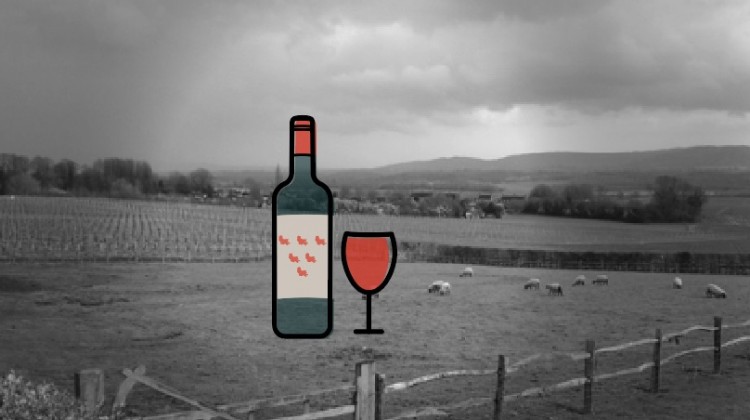
There is opportunity for the emerging wine industry of Sussex to influence the very climate it relies on by increasing its use of climate-friendly production practices. To do so, the Sussex wine industry can learn from global climate-friendly wine pioneers who can share best practices and their benefits.
Best practices in this case are climate-friendly wine production practices that either increase carbon stored in vineyard soils or vegetation, for example minimal tillage or planting native plants on site, or decrease greenhouse gas emissions, for example reduced tractor passes and lighter weight bottles or alternative packaging that minimizes emissions from production and shipping.
If we are to meet crucial climate change targets, agreed on both internationally and in the UK, then the agricultural sector needs to increase its leadership in reducing their greenhouse gas emissions, including wine production all along the value chain. As the wine industry continues to grow, greenhouse gas emissions from wine production also increase, from activities ranging from burning tractor fuel to bottling and wine transport.
Sussex sparkling wine is increasingly recognised for its similar qualities to Champagne. Vineyards are taking advantage of the temperature rise in southeast England by cultivating the vine-friendly chalky soil of the Sussex countryside, which is now the dominant wine region in the UK.
However, climate change is not just about increasing temperatures. Sussex will have to manage the potentially crop-damaging impacts of climate change: erratic precipitation, extreme weather events, and increased pressure from pests and disease. Grapes are a particularly climate sensitive crop, with regional quality affected by temperature and rain. Stabilising climate change is clearly in the producers’ interest.

Figure 1 – Regional band suitable for growing wine shown between the red and blue lines. The band moves to higher latitudes with climate change. Sussex wine region marked in black in southeast England (Image from Smyth & Nesbitt, 2012).
Sussex is an exciting area for wine research and the focus of my thesis for Lund University. As an emerging wine region, Sussex producers may be more likely to innovate as well as take advice from experts, rather than stick to tradition.
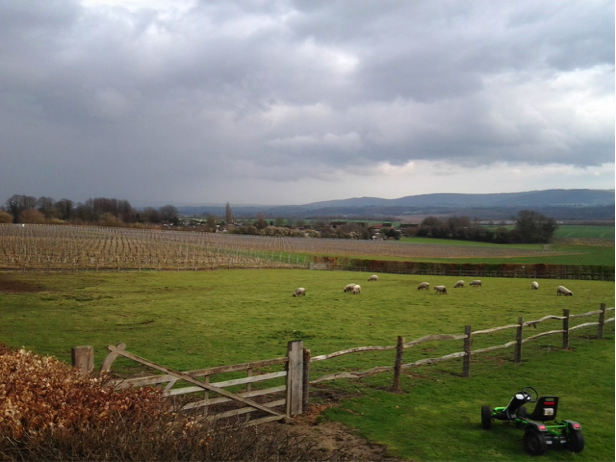
Figure 2 – Sussex vineyard next to more traditional land use, sheep farming (photo: Ellen Redford).
My research took a three-pronged approach to address how the use of climate-friendly practices can be increased in the Sussex wine industry: identifying the wine production stages with the biggest climate impact, learning from global leaders in climate-friendly wine production, and interviewing Sussex wine producers.
First, from conducting a literature review, I identified that the stages of wine production with the biggest impact on climate change are vine growing and bottling. The literature pointed to various aspects of vine growing that emit high levels of climate-warming greenhouse gases including: fertiliser use, decomposition of biomass and fuel for machinery. The main contribution to greenhouse gas emissions from bottling wine is the energy-intensive process of glass production for bottles. These stages of wine production became the focus of my research.
Second, I analysed online material related to 26 global climate-friendly wine producers, and received questionnaire responses from six of these. I identified that the majority of climate-friendly wine producers were based in Australia, the United States and New Zealand. These producers were classified climate-friendly because they identified that an aspect of their wine production was carbon neutral.
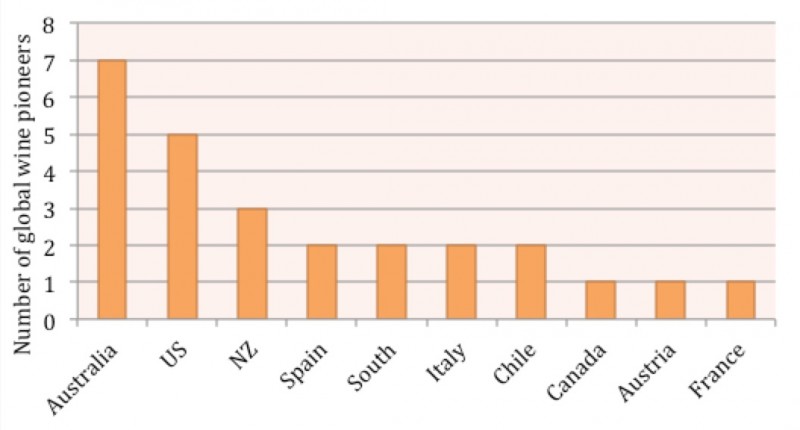
Figure 3 – Country distribution of global carbon neutral wine producers, based on author’s analysis of 26 company websites.
The vast majority (24 out of 26) achieved their climate-friendly status with both climate-friendly practices and by offsetting emissions. None of the climate-friendly producers achieved this status with climate-friendly practices alone.
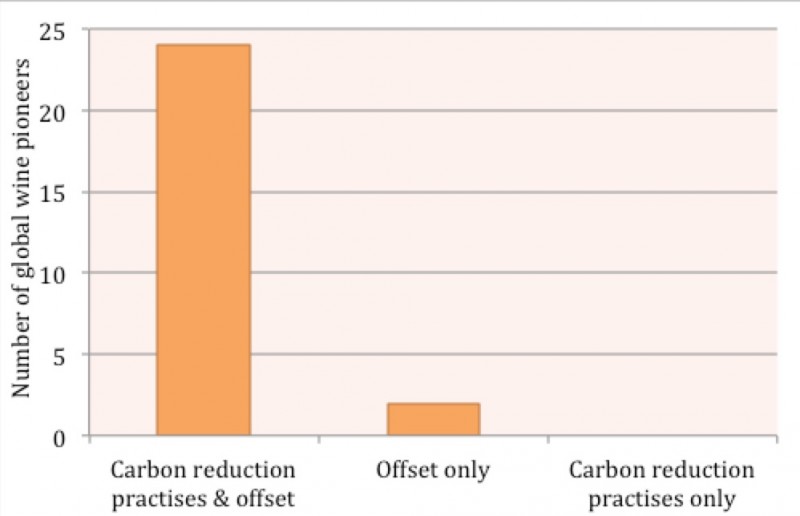
Figure 4 – How 26 global carbon neutral wine producers achieved this status
The questionnaire identified that the majority of climate-friendly wine producers were motived equally by the environment (as evidenced by comments such as “I love my planet”) and economics (citing “The rising cost of non-renewables” as a motivation). This was followed by marketing motivations (“To differentiate ourselves”) and morals (“My generation owns a large part of the problems of climate change”).
Third, I interviewed ten Sussex wine producers to understand their current practices and how they may be able to increase their use of climate-friendly practices. Many of the ten Sussex wine producers revealed that they were using climate-friendly practices, even if they were not aware of it. Most of the climate-friendly practices are in the vine growing stage, for example all ten producers have aspects of manual labour replacing polluting tractors, and planting native plants on site. Only one wine producer also used low-carbon bottling, opting for a lighter weight glass bottle, and reducing greenhouse gas emissions related to glass production energy costs and transport.
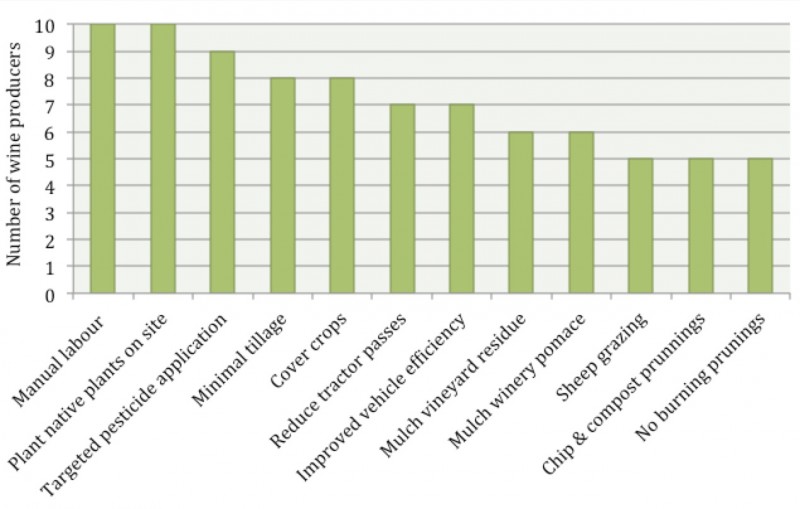
Figure 5 - Ten Sussex wine producer’s current use of climate-friendly vine growing practices, based on author interviews with wineries. These practices reduce emissions of greenhouse gases (e.g., using manual labour instead of burning tractor fuel), preserve and enhance the carbon stored in soils to prevent it being released to the atmosphere (e.g., minimal tillage and mulch), and improve biomass carbon storage (e.g., planting native plants and cover crops).
So what are the barriers preventing Sussex wine producers from increasing their use of climate-friendly practices? I identified two main barriers to climate-friendly vine growing practices: the expense and a lack of awareness. Two main barriers to climate-friendly bottling were: customer perception of a high-end product being bottled in glass, and practical implementation of switching bottling systems.
Wine producers around the world are already taking responsibility for their impact on climate change by adopting climate-friendly production practices. Learning from these climate leaders could help pave the way for emerging wine regions to reduce their impact on the climate they rely on. Understanding existing barriers to adopting climate-friendly practices can increase the use of these practices by focusing on ways to overcome them.
My initial recommendations to address the barriers to Sussex wine producers using climate-friendly practices are:
1. Benefit from existing industry organisations like UKVA to develop practical researched-based guidelines for wine producers to prioritize and implement climate-friendly actions.
2. A wine carbon calculator should be developed for England so producers can monitor and take control of their impact.
3. A robust cost/benefit analysis of climate-friendly practices should be carried out, so wine producers can make informed decisions about their impact and the cost to prioritize actions.
The wine industry could act as a springboard for pioneering climate-friendly practices for the agricultural sector. Sussex wine producers are in a good position to implement climate-friendly practices because producers of high-end wines have relatively more control over production.
As wine consumers, we can also do our bit to encourage climate-friendly wine. We can support climate-friendly producers by buying their wine and changing our attitude to bottles!
